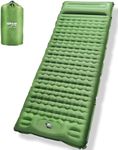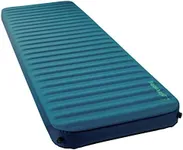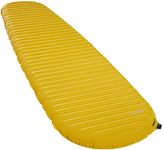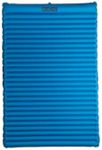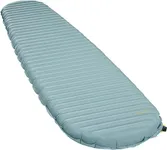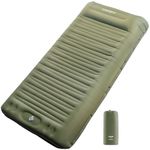Buying Guide for the Best Sleeping Pads
Choosing the right sleeping pad is crucial for a comfortable night's sleep while camping or backpacking. A sleeping pad provides insulation from the cold ground and cushioning for comfort. When selecting a sleeping pad, consider factors such as the type of activity, the season, and your personal comfort preferences. Here are some key specifications to help you make an informed decision.TypeSleeping pads come in three main types: air pads, self-inflating pads, and closed-cell foam pads. Air pads are lightweight and packable, making them ideal for backpacking. Self-inflating pads offer a balance of comfort and convenience, as they inflate partially on their own and can be topped off with a few breaths. Closed-cell foam pads are durable and inexpensive, but they are bulkier and less comfortable. Choose the type based on your activity and comfort needs.
R-ValueR-Value measures the sleeping pad's insulation ability. The higher the R-Value, the better the pad will insulate you from the cold ground. For summer camping, an R-Value of 1-3 is usually sufficient. For spring and fall, look for an R-Value of 3-5. For winter camping, an R-Value of 5 or higher is recommended. Consider the season and temperature conditions you'll be facing to determine the appropriate R-Value.
ThicknessThickness affects both comfort and insulation. Thicker pads generally provide more cushioning and better insulation. Pads can range from less than an inch to several inches thick. If you prioritize comfort, opt for a thicker pad. For ultralight backpacking, a thinner pad may be preferable to save weight. Balance your need for comfort with the weight and packability of the pad.
WeightWeight is an important consideration, especially for backpackers who need to carry their gear over long distances. Lightweight pads are easier to carry but may sacrifice some comfort and durability. Heavier pads often offer more comfort and durability but can be cumbersome to transport. Choose a pad that strikes the right balance between weight and comfort based on your activity.
Packed SizePacked size refers to how small the sleeping pad can be compressed for transport. Smaller packed sizes are ideal for backpacking, where space in your pack is limited. Larger packed sizes may be acceptable for car camping, where space is less of a concern. Consider how much room you have in your pack and how important portability is to you.
DurabilityDurability is important for ensuring your sleeping pad lasts through multiple trips. Materials like high-denier fabrics and reinforced seams can enhance durability. If you plan to use your pad frequently or in rugged conditions, look for a more durable option. For occasional use or less demanding environments, you may be able to opt for a lighter, less durable pad.
ComfortComfort is subjective and can depend on factors like pad thickness, material, and design. Some pads have additional features like contoured surfaces or built-in pillows to enhance comfort. If you have specific comfort needs, such as back support, look for pads that cater to those requirements. Test different pads if possible to find one that feels comfortable to you.

